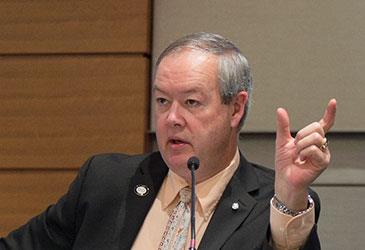The development of a single accreditation system for graduate medical education (GME) is well underway, and physician leaders expect its full implementation in July 2020. Learn how the unified system should benefit the medical community.
Better alignment in GME
For the last two years, leaders of the Accreditation Council for Graduate Medical Education (ACGME) and American Osteopathic Association (AOA) have made institutional changes—such as electing new members from the AOA and American Association of Colleges of Osteopathic Medicine to join the ACGME’s board of directors—that will allow all GME programs to successfully align under one new accreditation system within the ACGME.
The system will allow graduates of osteopathic and allopathic medical schools to complete their residency and fellowship education in ACGME-accredited programs. Under the new system, all physicians in training will be able to demonstrate their achievements by meeting a common set of milestones and competencies.
AOA Trustee and President-Elect Boyd R. Buser, DO (pictured), recently spoke to educators about the new accreditation system at the 2015 AMA Interim Meeting. Joining him for the panel discussion was co-presenter John R. Potts lll, MD, senior vice president of surgical accreditation for the Accreditation Council for Graduate Medical Education. Both speakers described how the single accreditation system will increase efficiencies, cost savings and transparency in GME.
“Over the years, we’ve had a number of GME programs that are dually accredited—they were accredited by the ACGME and AOA—and those programs had to answer to two different accrediting bodies and pay two different sets of accrediting fees,” Dr. Buser said. “This is an unnecessary duplication and cost.”
In addition to saving resources, switching to a single accreditation system could help advance efforts to expand residency programs. Under the new system, board members and educators would be able to join efforts in advocating for more residency spots.
“Having a single accreditation system allows us to speak with one voice,” Dr. Buser said. “It will enhance accountability, public trust” and alleviate unnecessary burdens on program directors and other GME stakeholders.
Dispelling misconceptions: What the single system won’t do
Dr. Buser emphasized that it’s important to understand that this new system specifically addresses GME accreditation alone—and not other associated factors.
“What we’re doing here is bringing together the accreditation of GME—and that was all that our discussions revolved around,” Dr. Buser said. “This has never been about joining the undergraduate medial education accreditation [or] merging board certifications.”
That means that osteopathic and allopathic medical schools will retain their distinctions. Similarly, processes for continuing medical education programs and licensure examinations will remain unchanged.




